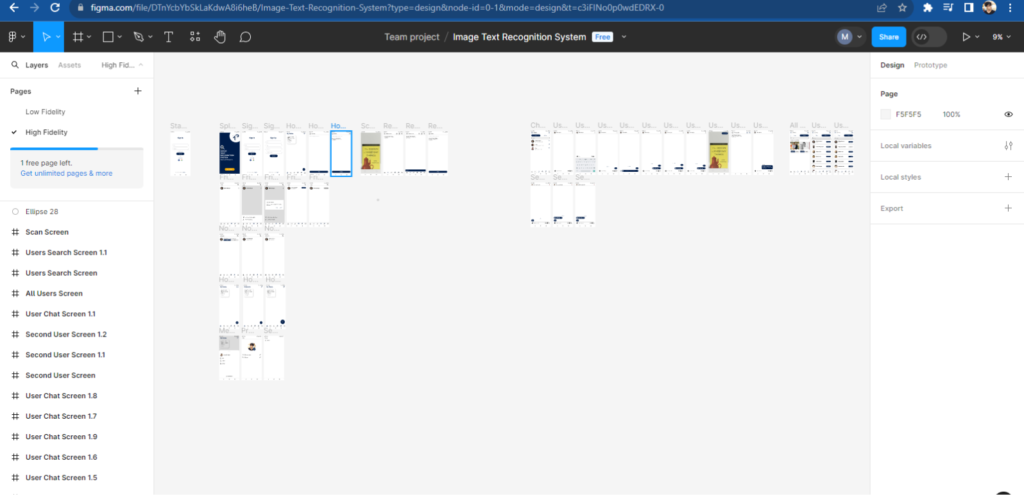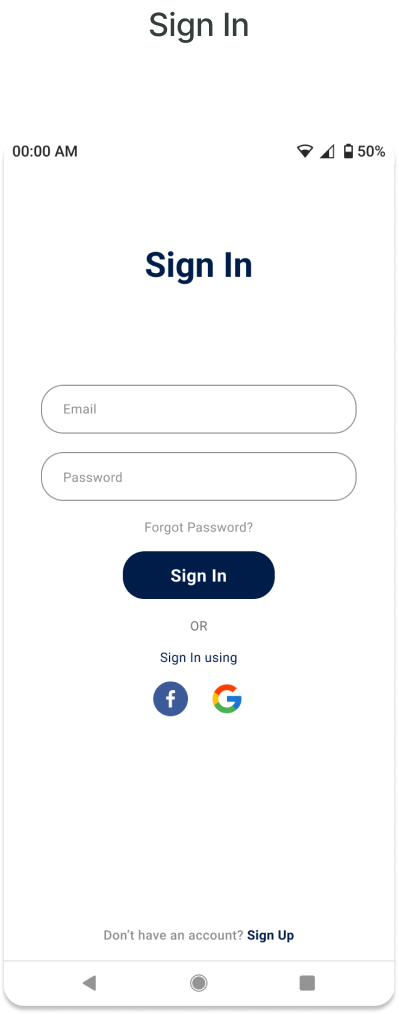Image Text Recognition System
Project Overview

The product:
In the rapidly evolving digital ecosystem, the capability to seamlessly extract text from images featuring complex backgrounds stands as a pivotal challenge. Traditional OCR (Optical Character Recognition) technologies frequently encounter obstacles, struggling with the rich diversity of fonts, colors, and intricate details present in modern digital media. This limitation significantly hampers the effectiveness of digital content management and accessibility, underscoring the need for a groundbreaking solution.

Projecr Duration:
Jan 2021 to Dec 2021.

The problem:
Central to addressing this challenge is the creation of a sophisticated text recognition application designed to adeptly handle the intricacies of varied backgrounds with unmatched precision. Existing technologies often struggle to accurately identify and extract text within the visual clutter of complex scenes, resulting in significant errors that can severely impact the interpretation and usefulness of the data.

The goal:
The goal is to develop a cutting-edge text recognition application that surpasses current technology limits. Utilizing sophisticated algorithms, it will accurately detect and recognize text in complex environments. Additionally, an integrated chat room will facilitate document sharing and user collaboration, significantly improving productivity and transforming work processes. This application aims to set a new benchmark in text recognition and foster a vibrant user community.

My role:
Product Designer | UX Engineer

Responsiblities:
UX Research, Wireframing, Lo-fi, Hi- fi, Prototyping.
Understanding
the user
- User Reserach
- Personas
User research: summary

User research highlights a critical demand for a text recognition app that combines high accuracy in complex environments with user-friendly collaboration tools. Feedback from a varied audience points to the necessity for a solution that's both quick to process texts and easy to use, emphasizing the gap in current offerings.
The envisioned app aims to meet these needs, ensuring precision in text recognition while enabling seamless document sharing and communication, marking a significant leap forward in technology and user engagement.
User research: pain points

Inaccuracy in Complex Backgrounds
Users frequently encounter difficulties with text recognition software failing to accurately detect and interpret text overlaid on intricate or cluttered backgrounds, leading to errors in data extraction.

Slow Processing Speed
Many users express frustration over the slow processing speeds of current text recognition tools, which significantly hampers their workflow and productivity, especially when dealing with large volumes of data.

Lack of Collaboration Features
The absence of built-in collaboration features in most text recognition applications is a major pain point, making it challenging for users to share documents and communicate efficiently within a team or across platforms.

Complicated User Interfaces
A complex or unintuitive user interface in text recognition apps often results in a steep learning curve, discouraging users from fully utilizing the application's capabilities or leading to inefficient use of the technology.

Limited Versatility
Users find that many text recognition applications are not versatile enough to handle a variety of document types and text formats, limiting their applicability across different tasks and industries.
Persona:
Problem statement:
Ali faces difficulties in extracting text from images with busy backgrounds, impacting his work efficiency and requiring a solution that enhances text recognition speed and accuracy.
Name: Ali
Age: 28
Occupation: Software Developer
Location: Karachi, Pakistan
Pakistan
Quote: “Trying to pull text from images, especially when the background’s busy, just slows everything down. I need a tool that’s quick and gets it right the first time.”
Background
Ayesha is a busy professional who enjoys spending her weekends with friends and family. She loves going to the movies but finds the process of finding showtimes and booking tickets to be inconvenient and time-consuming. She often has to make multiple trips to the cinema to book tickets, which takes away from the enjoyment of the experience.
Goals:
- Accurately extract text from images with complex backgrounds
- Quickly convert image-based text into editable documents
- Enhance workflow efficiency with a user-friendly text recognition tool
- Benefit from a system that adapts and improves text recognition accuracy over time
Challenges:
- Time constraints hinder thorough text extraction and analysis from images
- Challenges in accessing comprehensive information and reviews for image-based text
- Inconvenient or cumbersome text recognition processes
- Inconsistent accuracy in recognizing text from various image sources
- Lack of robust loyalty programs or incentives for frequent users of the text recognition system
Starting
the design
- Low-fidelity Screens
- High-fidelity Screens
- Usability studies
- Accessibility Considerations
Lo-Fi:

Hi-Fi:

Usability Study Findings:

User Interface Clarity
Participants found the user interface to be cluttered and confusing, making it difficult to locate and utilize key features for text recognition. Streamlining the interface and improving visual hierarchy could enhance usability significantly.

Speed and Responsiveness
Users expressed frustration with the application's slow response times, especially when processing larger image files or batches of images. Improving the system's speed and responsiveness would enhance user satisfaction and efficiency in completing tasks.

Error Handling and Feedback
Participants noted that the application lacked clear error messages or feedback when text recognition failed or encountered issues. Enhancing error handling mechanisms and providing informative feedback would help users troubleshoot problems more effectively and improve overall usability.
Mockups:







Accessibility Considerations:

Text Size and Contrast
Used a legible font size and high contrast ratio for all text elements, including titles, subtitles, body text, and button labels.

Alternative Text for Images
Ensured that all images used in the mockups have alternative text descriptions to provide context and information to users with visual impairments.

Screen Reader Compatibility
Design the mockups to be compatible with screen readers and other assistive technologies, ensuring that all users can access and use the application's features.

Color and Font Choices
Color and font combinations used are accessible and readable for users with color blindness or other visual impairments.

Clear Language and Simple Design
Used clear and concise language in the mockups, and designed the user interface straightforward and easy to navigate, making it accessible for all users, including those with cognitive impairments.
Moving
Forward
- Takeaways
- Next steps
Takeaways
Impact:
Next steps
- Conduct additional usability testing rounds to gather feedback on the revised design.
- Perform an accessibility audit to ensure compliance with accessibility standards.
- Optimize system performance to improve speed and responsiveness.
- Develop user training materials and documentation to support effective system usage.
- Establish mechanisms for ongoing user feedback collection and integration.